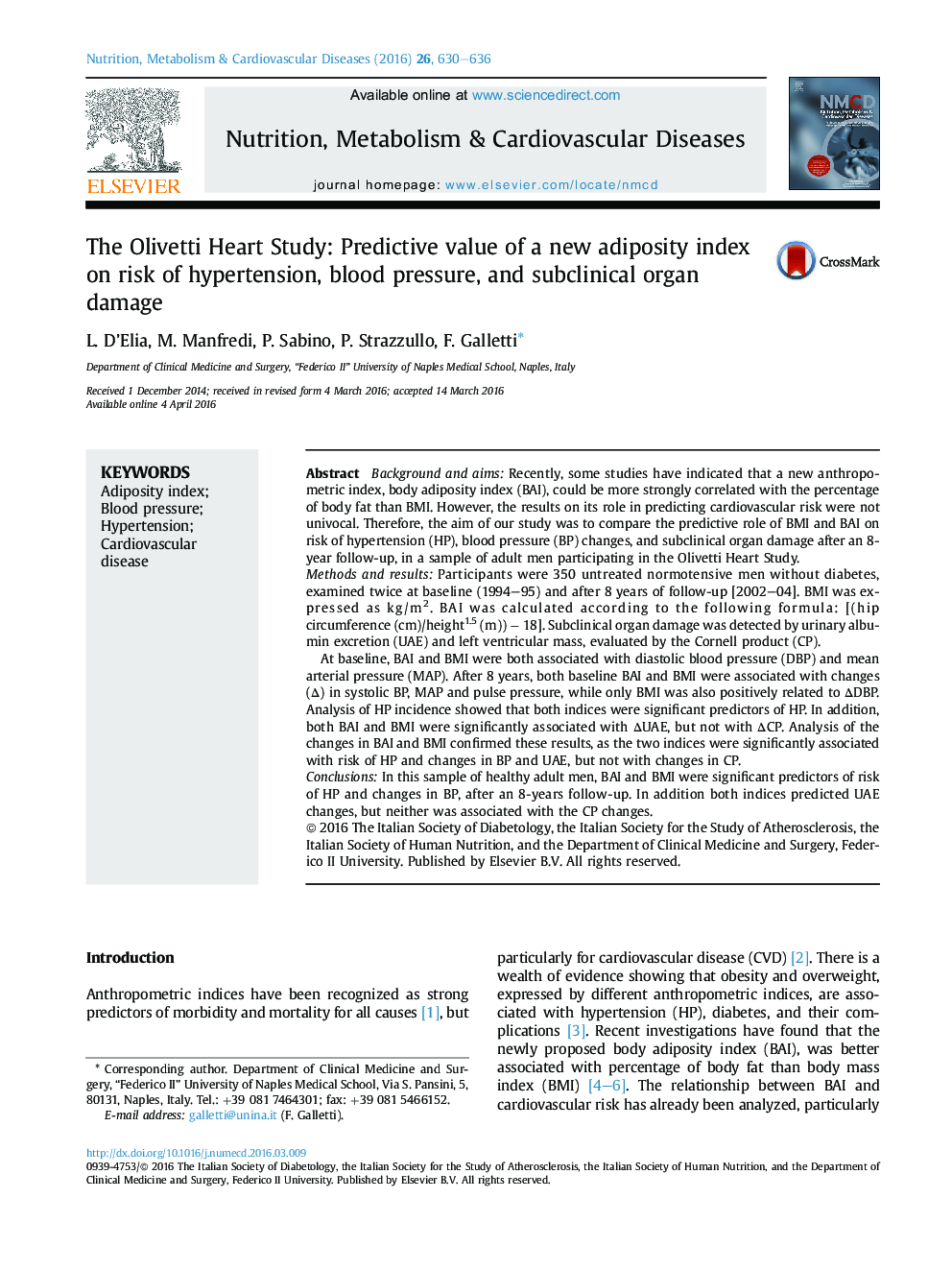| Article ID | Journal | Published Year | Pages | File Type |
|---|---|---|---|---|
| 3001764 | Nutrition, Metabolism and Cardiovascular Diseases | 2016 | 7 Pages |
•In an adult sample of generally healthy men, BAI was not a better predictor of the hypertension risk than BMI.•BAI and its changes over time were not a better predictor of increase in urinary albumin excretion than BMI.•Both BAI and BMI were not significantly associated with changes in Cornell product over time.
Background and aimsRecently, some studies have indicated that a new anthropometric index, body adiposity index (BAI), could be more strongly correlated with the percentage of body fat than BMI. However, the results on its role in predicting cardiovascular risk were not univocal. Therefore, the aim of our study was to compare the predictive role of BMI and BAI on risk of hypertension (HP), blood pressure (BP) changes, and subclinical organ damage after an 8-year follow-up, in a sample of adult men participating in the Olivetti Heart Study.Methods and resultsParticipants were 350 untreated normotensive men without diabetes, examined twice at baseline (1994–95) and after 8 years of follow-up [2002–04]. BMI was expressed as kg/m2. BAI was calculated according to the following formula: [(hip circumference (cm)/height1.5 (m)) − 18]. Subclinical organ damage was detected by urinary albumin excretion (UAE) and left ventricular mass, evaluated by the Cornell product (CP).At baseline, BAI and BMI were both associated with diastolic blood pressure (DBP) and mean arterial pressure (MAP). After 8 years, both baseline BAI and BMI were associated with changes (Δ) in systolic BP, MAP and pulse pressure, while only BMI was also positively related to ΔDBP. Analysis of HP incidence showed that both indices were significant predictors of HP. In addition, both BAI and BMI were significantly associated with ΔUAE, but not with ΔCP. Analysis of the changes in BAI and BMI confirmed these results, as the two indices were significantly associated with risk of HP and changes in BP and UAE, but not with changes in CP.ConclusionsIn this sample of healthy adult men, BAI and BMI were significant predictors of risk of HP and changes in BP, after an 8-years follow-up. In addition both indices predicted UAE changes, but neither was associated with the CP changes.
